| Book Code : | 116 |
|---|---|
| Subject Code : | 9706 |
| Author : | M. Nauman Malik |
| Edition : | 6th Edition |
| Publishers : | Read and Write Publications |
Description
Accounting A Level Theory And Practice Book
The globalized frame work of Cambridge International Advanced Level, in practice over 125 countries, has led to the introduction of an international format and layout for all its syllabuses. With a thorough discussion of the basic double entry principles for the beginners, the ‘A2 Accounting – Theory & Practice’ is also useful for those who have some knowledge.
The strengths and weaknesses of accounting practices are reinforced by a set of Review Questions at the end of each chapter, enabling the students to put, what is learnt, into practice. These Questions have been developed by the author and are not taken from past exam papers and Accounting A2 Level Theory and Practice Books.
This book is completely revised and updated to fully comply with the new CIE Advanced Level Accounting syllabus for 2016-18. Five new chapters have been included in the book in view of the new syllabus.
These topics include ’Auditing and stewardship of limited companies’, ‘Consignment Accounting, Joint Ventures’, ‘Activity based costing’ and ‘Computerized accounts’.
In addition, topics like ‘manufacturing accounts’, ‘non-profit organization have been shifted from ‘AS Accounting – theory and practice’ to this book. New material on overhead costing is also added to the topic ‘standard costing’. As syllabus contents relating to topics like ‘ratios’ and ‘Accounting standards’ have been reduced in new syllabus so these topics have been rewritten accordingly. Solutions to odd numbered questions are given in the appendix at the end of the book.
In addition solutions to even numbered questions are available in a separate manual. Teachers using “A2 Accounting – Theory & Practice” as a text book, may get the manual by applying officially on a school letterhead. Providing the students with a solid foundation in the “Why” as well as the “How” of accounting concepts, the emphasis is put on understanding rather than mere cramming.
A brief list of learning objectives at the beginning of each chapter will assist the readers to determine the things they should understand while going through the chapter.
Hence, checking back may help them to identify weak areas which still need thorough review. Constructive criticism and suggestions to make the subsequent editions more useful would be appreciated and thankfully acknowledged.
TABLE OF CONTENTS
PREFACE CHAPTER 1
CHANGES IN PARTNERSHIPS
1.1 Admission of a new partner
1.2 Retirement or Death of an Existing Partner
1.2.1 Final Settlement of Retired or Deceased Partner’s Capital
1.3 Changes in Profit-Sharing Arrangements
1.4 Apportionment of Profits
1.5 Adjustments for Goodwill
1.5.1 Factors Affecting the Value of Goodwill
1.5.2 Types of Goodwill
1.5.3 Valuation of Inherent Goodwill
1.5.4 Why is goodwill accounted for in a partnership?
1.5.5 Accounting Treatment of Goodwill
1.5.6 Why is Goodwill written off immediately?
1.6 Revaluation of Assets and Liabilities
1.6.1 Opening of a Revaluation Account
1.6.2 Profit or Loss on Revaluation
1.6.3 Revaluation of Non-Current Assets with Accumulated Depreciation 1.6.4 Values to Remain Unaltered in Books
1.7 CAPITAL IN PROFIT AND LOSS-SHARING RATIOS REVIEW QUESTIONS
CHAPTER 2 BUSINESS MERGERS
2.1 Merger of Businesses
2.2 Reasons (Advantages) of Mergers
2.3 Disadvantages of Mergers
2.4 Accounting Treatment of Merger of Businesses
2.4.1 Valuation of Goodwill
2.4.2 Revaluation of Assets and Liabilities
2.4.3 Adjustments to Capital Accounts
2.4.4 Statement of Financial Position After the Merger
2.4.5 Evaluating Business Performance Post-Merger
REVIEW QUESTIONS
CHAPTER 3 DISSOLUTION AND SALE OF PARTNERSHIPS
3.1 Reasons for Dissolving a Business
3.2 Realisation Account
3.3 Accounting Treatment on Dissolution
3.3.1 Assets on Dissolution
3.3.2 Goodwill on Dissolution
3.3.3 Liabilities on Dissolution
3.3.4 Expenses on Dissolution
3.3.5 Profit (loss) on Realisation Account
3.3.6 Partners’Loans Accounts on Dissolution
3.3.7 Current Account Balances on Dissolution
3.3.8 Cash or Bank Balance on Dissolution
3.3.9 Partners’ Capital Accounts on Dissolution
3.4 DIFFERENCE BETWEEN DISSOLUTION AND SALE OF BUSINESS
3.5 Accounting Procedure on Sale of Business
REVIEW QUESTIONS
CHAPTER 4 BUSINESS ACQUISITIONS
4.1 REA50NS FOR PURCHASE OF BUSINESS
4.2 Advantages of Acquisitions
4.3 Disadvantages of Acquisitions
4.4 Goodwill
4.4.1 Why does Goodwill arise?
4.5 Internally Developed Goodwill
4.6 Negative Goodwill
4.7 Difference between the Purchase of a Business and the purchase of assets
4.8 Components of purchase consideration
4.8.1 Assets Taken Over
4.8.2 Liabilities Taken Over
4.9 Dissolution Expenses
4.10 Purchase of a Sole Trader Business by a Company
4.11 Purchase of a Partnership’s Business by a Company
4.12 Entries to Record the Purchase of Business
4.13 Cash and Bank Balances of Partnerships on Purchase
4.14 Return on Investment
REVIEW QUESTIONS
CHAPTER 5 LIMITED COMPANIES – SHARES & DEBENTURES 5.1 THE NEED FOR COMPANIES
5.2 CAPITAL FOR A COMPANY
5.2.1 Ordinary Shares
5.3 Prices of a Share
5.3.1 Face Value
5.3.2 Issue Price
5.3.3 Book Value
5.3.4 Market Value
5.4 Selling Shares to the General Public
5.4.1 Issue of Shares at Par
5.4.2 Issue of Shares at Premium (at a price more than face value)
5.5 Rights Issue
5.5.1 Advantages of Rights Issue
5.5.2 Disadvantages of Rights Issue
5.5.3 Advantages of Rights Issue for Shareholders
5.6 Reserves
5.6.1 Capital Reserves
5.6.2 Revenue Reserves
5.7 BonusorScrip Issue
5.7.1 Reasons for Bonus Issue
5.7.2 Effect on Earnings per Share (EPS)
5.7.3 Advantages of Bonus Issue
5.7.4 Disadvantages of Bonus Issue
5.8 Difference between Rights and Bonus issue
5.9 Debentures
5.10 Issue of Loans and Debentures
REVIEW QUESTIONS
CHAPTER 6 LIMITED COMPANIED-FINANCIAL STATEMENTS
6.1 Financial Statements of Limited Companies
6.2 Published Accounts of Limited Companies
6.2.1 Role of IAS 1 in Preparation of Accounts
6.2.2 Accounting Concepts Applied in Preparation of Accounts
6.2.3 Structure and Content of Financial Statements
6.2.4 Reporting Period
6.3 Statement of profit or loss
6.4 Statement of Financial Position
6.5 Statement of Changes in Equity
6.5.1 Dividends on Ordinary Shares
6.5.2 Transfer to General Reserve
6.6 Why Company Accounts are Published?
6.7 Limitations of Published Company Accounts
6.8 Non-Current Assets Schedule
6.8.1 Components of a Non-Current Assets Schedule
6.9 Directors’ Report
REVIEW QUESTIONS
CHAPTER 7 STATEMENT OF CASH FLOWS
7.1 Classifications of Cash Flows – An example
7.2 Cash and Cash Equivalents
7.2.1 Cash
7.2.2 Cash Equivalents
7.2.3 Bank Overdrafts
7.3 Preparation of a Statement of Cash Flows
7.4 Cash Flow from Operating Activities
7.4.1 Importance of Cash Flow from Operating Activities
7.5 Calculation of Cash Flow from Operating Activities
7.5.1 Cash from Operating Activities in Direct Method
7.5.2 Cash from Operating Activities in Indirect Method
7.6 Calculation of Profit from Operations
7.7 Investing Activities
7.8 Financing Activities
7.9 Cash Flow at a Glance
7.10 Uses of a Statement of Cash Flows
7.11 Limitations of a Statement of Cash Flows
7.12 Users of Statement of Cash Flows
7.13 Disclosure of Non-Cash Activities
REVIEW QUESTIONS
CHAPTER 8 INTERNATIONAL ACCOUNTING STANDARDS
8.1 IAS 1: Presentation of Financial Statements
8.2 IAS 2: Inventories
8.2.1 Inventory Valuation
8.2.2 Inventory Valuation Methods
8.3 IAS 7: STATEMENT OF CASH FLOWS
8.4 IAS 8: Accounting Policies, Changes in Accounting Estimates and Errors
8.4.1 Accounting Policies
8.4.2 Accounting Principles
8.4.3 Accounting Bases
8.4.4 Consistency of Accounting Policies
8.4.5 Prior Period Errors
8.5 IAS 10: Events after the Reporting Period
8.5.1 Adjusting Events
8.5.2 Non-Adjusting Events
8.6 IAS 16: Property, Plant, and Equipment
8.6.1 Recognition of the Assets
8.6.2 Measurement of the Assets
8.6.3 Depreciation
8.6.4 Disclosure in the financial statements
8.7 IAS 36: IMPAIRMENT OF ASSETS
8.7.1 Impairment Loss
8.7.2 Carrying Value
8.7.3 Recoverable Value
8.7.4 Cash Generating Unit
8.7.5 Indications of Impairment
8.8 IAS 37: PROVISIONS, CONTINGENT LIABILITIES AND CONTINGENT ASSETS
8.8.1 Provision
8.8.2 Difference between Provisions and Reserves
8.8.3 Contingent Liability
8.8.4 Contingent Asset
8.9 IAS 38: INTANGIBLE ASSETS
8.9.1 Research and Development Costs
8.9.2 Recognition of Intangible Assets
8.9.3 Initial Measurement of Intangible Assets
8.9.4 Subsequent Measurement of Intangible Assets
REVIEW QUESTIONS
CHAPTER 9 AUDITING AND STEWARDSHIP
9.1 Stewardship
9.2 Role of Directors as Stewards
9.3 Purpose of an end of year Audit
9.4 Who needs an end-of-year Audit?
9.5 Internal and External Audit
9.5.1 Difference between Internal and External Audit
9.6 Advantag es and D isadvantages of Au dit
9.7 Role of Auditors
9.8 Auditors’ Report
9.8.1 Unqualified Opinion (Unqualified Audit Report)
9.8.2 Qualified Opinion (Qualified Audit Report)
9.8.3 Adverse Opinion (Adverse Audit Report)
9.9 What is not expected from Auditors
9.10 True and Fair View
9.11 Directors’ Report
9.12 Difference Between the Duties of Directors and Auditors
CHAPTER 10 ACCOUNTING RATIOS
10.1 Financial Ratios
10.2 Analysis of Ratios
10.2.1 Comparing One Year with Another {Trend or Inter-Year Analysis) 10.2.2 Comparing one Business with another Business (Inter-firm Comparison)
10.3 Demonstration of Ratios
10.4 Ratios in Advanced Level Syllabus
10.4.1 Working Capital Cycle
10.4.2 Net Working Assets to Sales (revenue)
10.4.3 Earnings per Share
10.4.4 Price-Earnings (P/E) ratio
10.4.5 Dividend per Share
10.4.6 Dividend yield ratio
10.4.7 Dividend Cover
10.4.8 Interest Cover
10.4.9 Gearing
10.5 Uses of Ratio Analysis
10.6 LIMITATIONS OF RATIO ANALYSIS
10.7 Users of Financial Ratios
REVIEW QUESTIONS
CHAPTER 11 CLUBS AND SOCIETIES
11.1 Comparison between profit and Non-Profit making Organisations
11.2 Incomes and Expenses of Clubs and Societies
11.2.1 Incomes of Clubs and Societies
11.2.2 Expenses of Clubs and Societies
11.3 Some Peculiar Terms of Clubs and Societies
11.3.1 Life Subscription
11.3.2 Legacy
11.3.3 Gift
11.3.4 Grants and Donations
11.4 Accounting by Clubs and Societies
11.4.1 Receipts and Payments Account
11.4.2 Income and Expenditure Account
11.4.3 Differences between Receipts and Payment A/c & Income and Expenditure A/c
11.4.4 Statement to Calculate Profit or Loss
11.4.5 Income and Expenses on Same Head
11.5 Calculation of Incomes/Expenses to be shown in Income and Expenditure Account
11.5.1 Accounting for Subscriptions
11.6 Preparation of Financial Statements
REVIEW QUESTIONS
CHAPTER 12 MANUFACTURING BUSINESSES
12.1 The Prime Cost Section
12.1.1 Raw Materials Cost
12.1.2 Direct Labour Cost
12.1.3 Other Direct Expenses
12.2 Factory (Indirect) Overheads
12.3 Purpose of Manufacturing Accounts
12.4 Statement of Profit or Loss
12.5 Statement of Financial Position
12.6 Factory (Manufacturing) Profit
12.6.1 Benefits of Transferring Goods at Production Cost plus Factory Profit.
12.6.2 Drawbacks of Transferring Goods at Market Price
12.6.3 Accounting Treatment of Factory Profit
12.7 Provision for Unrealised Profit
REVIEW QUESTIONS
CHAPTER 13 COMPUTERISED ACCOUNTING SYSTEMS
13.1 Manual Accounting
13.1.1 Challenges Faced in Manual Accounting
13.2 The Advent of Computerised Accounting
13.3 Use of Computerised Accounting Systems in Recording Financial Transactions
13.4 The Advantages and Disadvantages of Introducing a Computerised Accounting System
13.4.1 The Advantages/Uses of Introducing a Computerised Accounting System
13.4.2 Disadvantages/Limitations of Introducing a Computerised Accounting System
13.5 Differences between Manual and Computerised Accounting Systems
13.6 Security of Data in Computerised Accounts
13.7 Transferring Business Accounts to a Computerised Accounting System
13.8 Potential Risks and Threats to Data Integrity
13.9 INTEGRALITY OF DATA DURING TRANSFER TO AND IN COMPUTERISED ACCOUNTS
CHAPTER 14 ETHICAL CONSIDERATIONS
14.1 Ethics Relating to the Practice of Accounting
14.2 Professional ethics
14.3 What is Ethical?
14.4 Fundamental Ethical Principles
14.5 The Problems of Poor Ethics in Accounting
14.6 The Ethical Impact of Accountants and Auditors on Business
14.7 The Ethical Impact of Accountants and Auditors on Stakeholders
14.8 Social implications of decision-making
14.9 Ethical Conflict
REVIEW QUESTIONS
CHAPTER 15 BUDGETING AND BUDGETARY CONTROL
15.1 Difference between Budgets and Budgetary Control
15.2 Difference between Standard Costs and Budgets
15.3 Advantages of Preparing Budgets from Standard Costs 15.4 Advantages of budgetary Control system
15.5 Limitations of Budgetary Control System
15.6 Advantages and Disadvantages of Preparing Budgets Using Spreadsheets
15.7 Effects of Limiting Budget Factors on the Preparation of Budgets
15.8 Behavioural Aspects of Budgetary Control System
15.9 Sales Budget
15.10 Production
Budget 15.11 Purchases Budget
15.11.1 Purchase Budget for Manufacturing Firms
15.11.2 Purchase Budget for Trading Firms
15.12 Direct Labour Budget
15.13 Trade Receivables Budget
15.14 Trade Payables Budget
15.15 Cash Budget
15.15.1 Uses of a Cash Budget
15.15.2 Actions to Avoid Cash Shortages
15.16 Master Budget
15.16.1 Budgeted Statement of profit or loss
15.16.2 Budgeted Statement of Financial Position
15.17 Fixed Budget
15.18 Flexible Budget
15.18.1 Steps for preparing a flexible budget
15.19 Benefits of a flexible budget over a fixed Budget
15.20 The Significance of Non-Financial Factors in Budgeting
REVIEW QUESTIONS
CHAPTER 16 INVESTMENT APPRAISAL
16.1 Reasons for Making Capital Investment Decisions
16.2 Methods for Capital Investment Appraisal
16.3 Accounting Rate of Return
16.3.1 Advantages of Accounting Rate of Return
16.3.2 Disadvantages of Accounting Rate of Return
16.4 Payback Period
16.4.1 Payback Period with Even Cash Flows
16.4.2 Payback Period with Uneven Cash Flows
16.4.3 Advantages of Payback
16.4.4 Disadvantages of Payback
16.5 Time Value of Money
16.6 Compound Interest
16.7 Present Value
16.8 Cost of Capital
16.9 Net Present Value
16.9.1 Selection of Project
16.9.2 Advantages of Net Present Value
16.9.3 Disadvantages of Net Present Value
16.10 Internal Rate of Return
16.10.1 Which Rate is Better?
16.10.2 Calculation of IRR
16.10.3 Advantages of Internal Rate of Return
16.10.4 Disadvantages of Internal Rate of Return
16.11 NPVAND IRR: WHICH IS BETTER?
16.12 Why is NPV preferred?
16.13 Sunk Cost
16.14 Relevant Costs
16.15 NON-FlNANCIAL FACTORS INVOLVED IN CAPITAL INVESTMENT DECISIONS
16.16 Present Value Table
REVIEW QUESTIONS
CHAPTER 17 ACTIVITY BASED COSTING
17.1 Traditional Costing in Early Business Models
17.1.1 Overhead Allocation in Conventional Costing
17.1.2 Limitations of Conventional Costing
17.1.3 Impact of Automation on Cost Allocation
17.2 Introduction of Activity-Based Costing (ABC)
17.2.1 Principles and Methodology of ABC
17.3 Costing Issues in Conventional Costing
17.4 Application of Activity Based Costing
17.5 Difference between Conventional and Activity Based Costing
17.6 Terms Frequently Used in Activity Based Costing
17.6.1 Activity
17.6.2 Cost Drivers
17.7 Hierarchy of Activities
17.7.1 Unit (output) Level Activities
17.7.2 Batch Level Activities
17.7.3 Product (Product Sustaining) Level Activities
17.7.4 Facility (Facility Sustaining) Level Costs
17.7.5 Customer-Level Activities
17.8 Examples of Cost Drivers
17.9 Uses of Activity Based Costing
17.10 Limitations of Activity Based Costing
17.11 Steps for Implementing Activity Based Costing
17.12 Role of Activity Based costing in the Non-manufacturing sector
REVIEW QUESTIONS
CHAPTER 18 STANDARD COSTING
18.1 Standard Costing System
18.2 Advantag es of Standard Costing
18.3 Limitations of Standard Costing
18.4 Setting Standard Costs
18.5 Variance Analysis
18.6 Total ‘Direct Mate rial Cost Variance’
18.6.1 Material Price Variance
18.6.2 Material Usage Variance
18.6.3 Symbols Used for Calculating Direct Material Variances
18.6.4 Typical Causes of Material Variances
18.7 Total direct Labour Cost Variance
18.7.1 Labour Rate Variance
18.7.2 Labour Efficiency Variance
18.7.3 Symbols Used for Calculating Direct Labour Variances
18.7.4 Typical Causes of Labour Variances
18.8 Total Fixed Overhead Variance
18.8.1 Fixed overhead expenditure (spending) variance
18.8.2 Fixed Overhead Volume Variance
18.8.3 Fixed Overhead Efficiency Variance
18.8.4 Fixed Overhead Capacity Variance
18.8.5 Typical Causes of Fixed Overhead Variances
18.9 Sales Variances
18.9.1 Sales Price Variance
18.9.2 Sales Volume Variances
18.9.3 Typical Causes of Sales Variances
18.10 Fixed Budget
18.11 Flexible Budget
18.11.1 Steps for preparing a flexible budget
18.11.2 Benefits of a flexible budget over a fixed Budget
18.12 Reconciliation of Budgeted and Actual Data
18.12.1 Reconciliation of Budgeted and Actual Costs
18.12.2 Reconciliation of Budgeted and Actual Profits
REVIEW QUESTIONS
SOLUTIONS TO ODD NUMBERED QUESTIONS
KEY TO EVEN NUMBERED QUESTIONS
INDEX
You must be logged in to post a review.

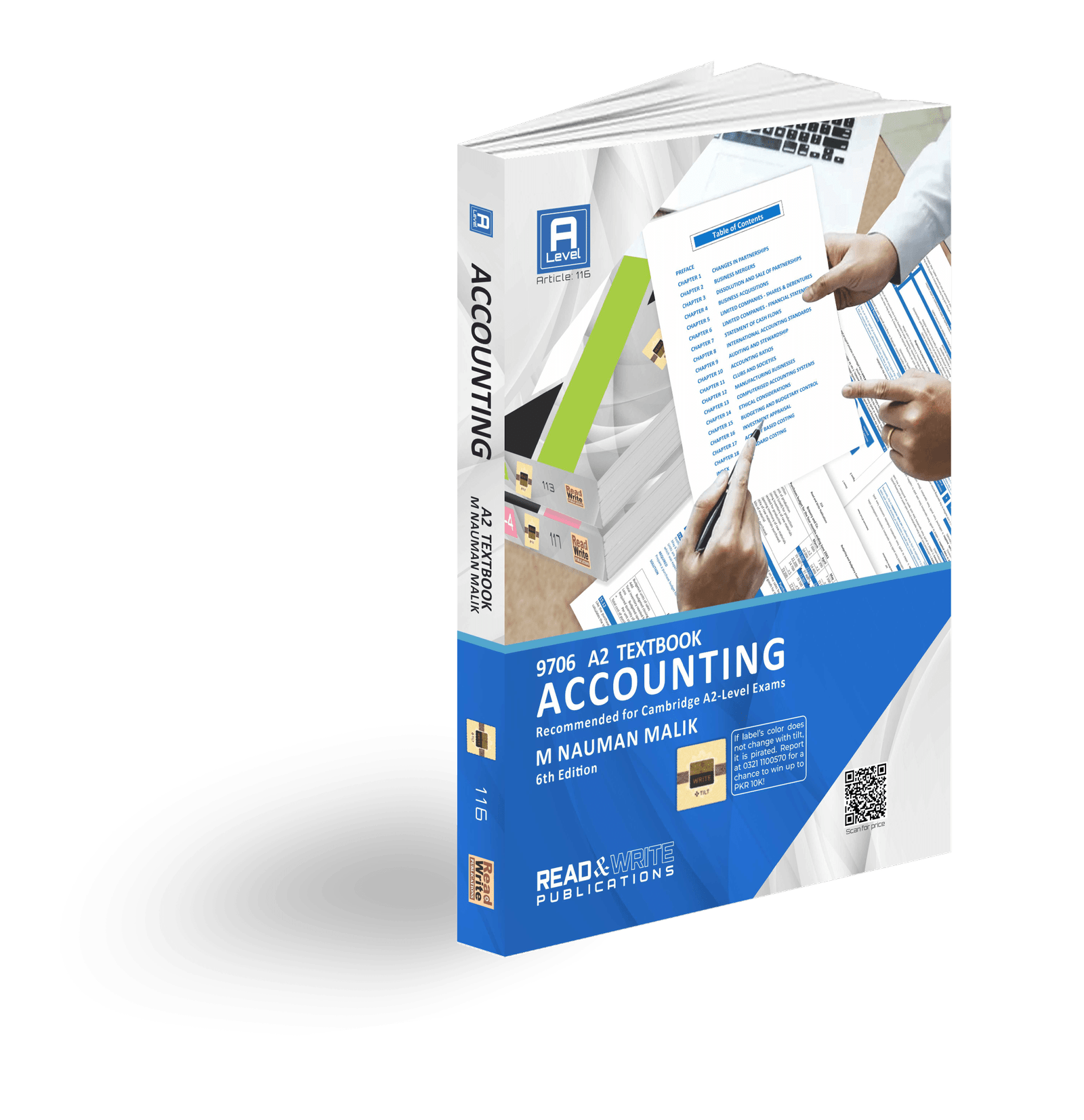
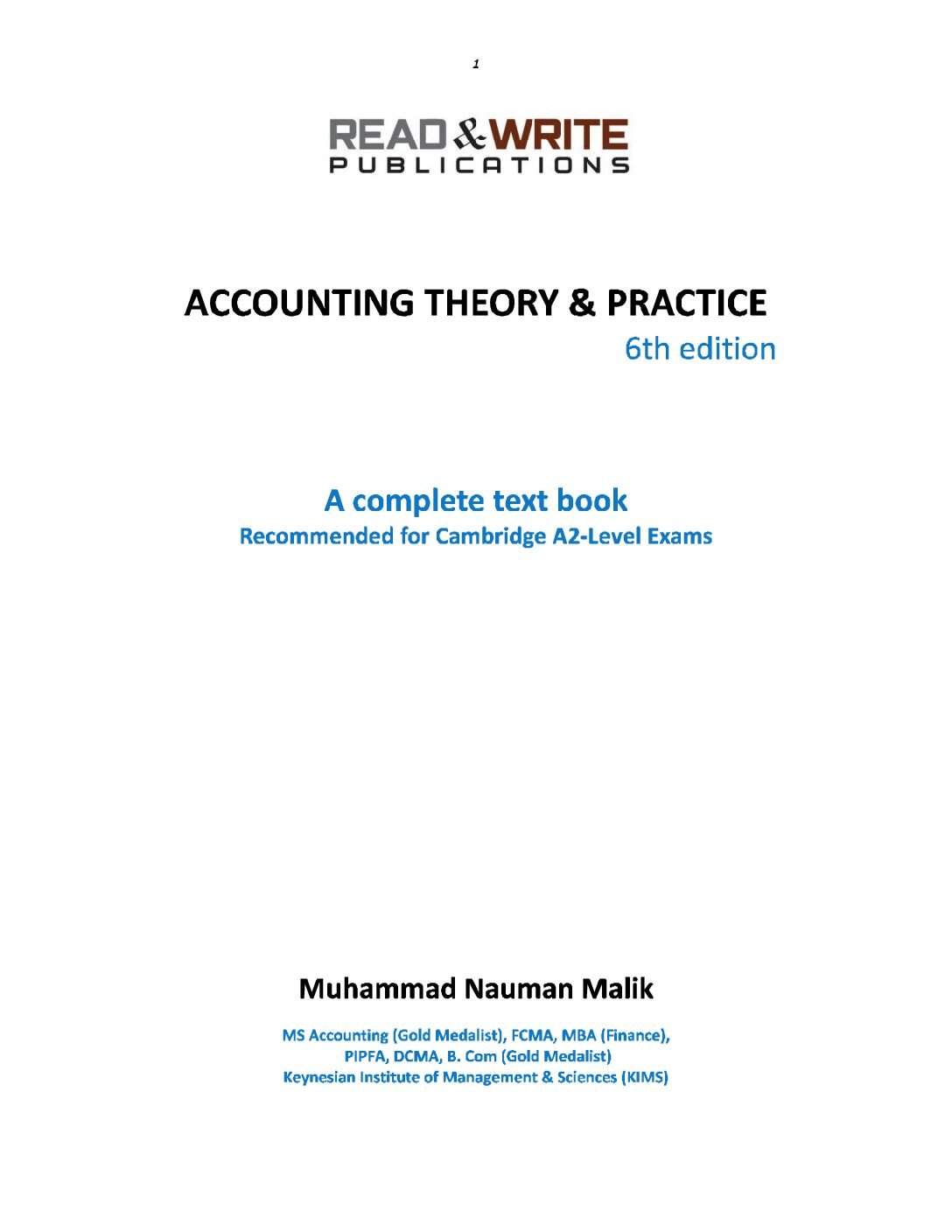

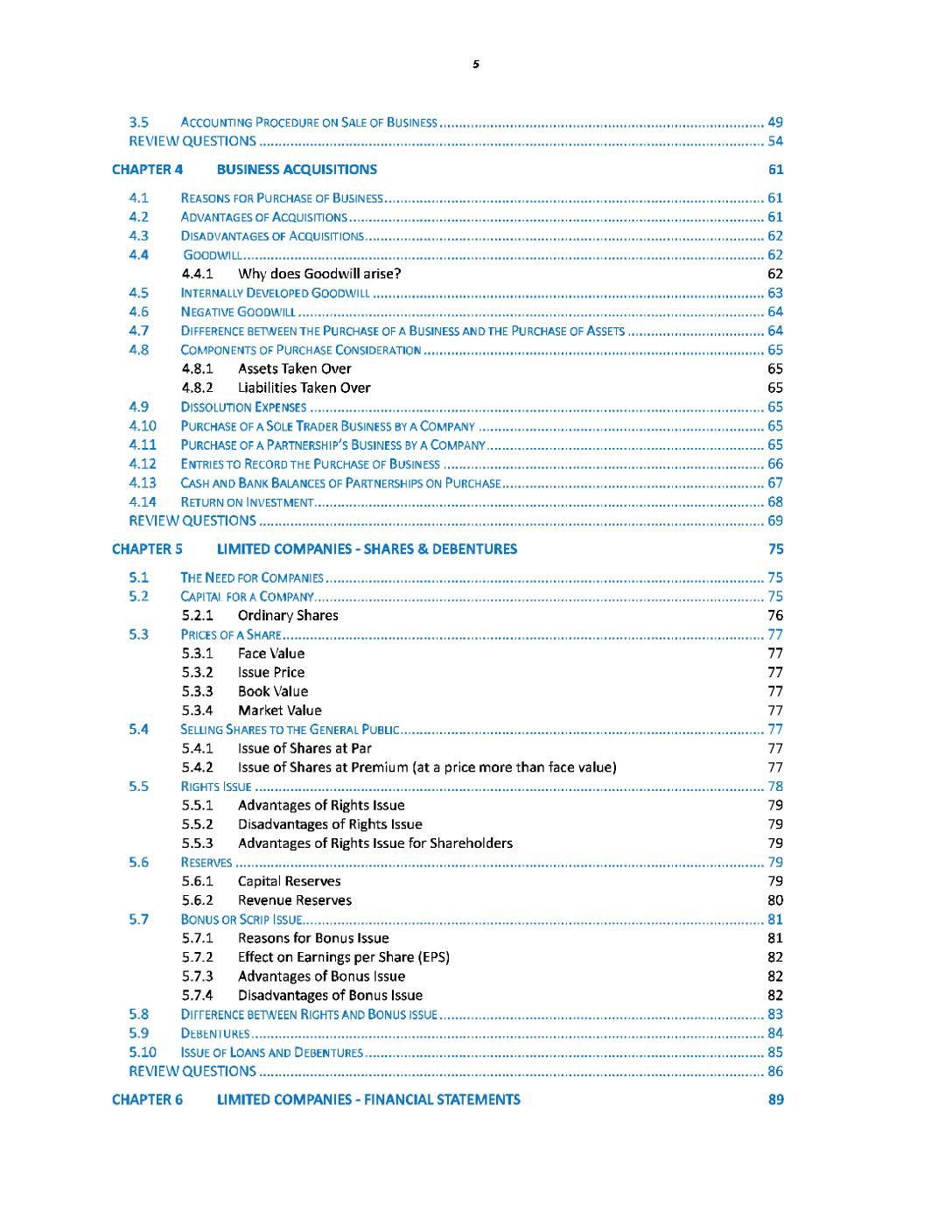


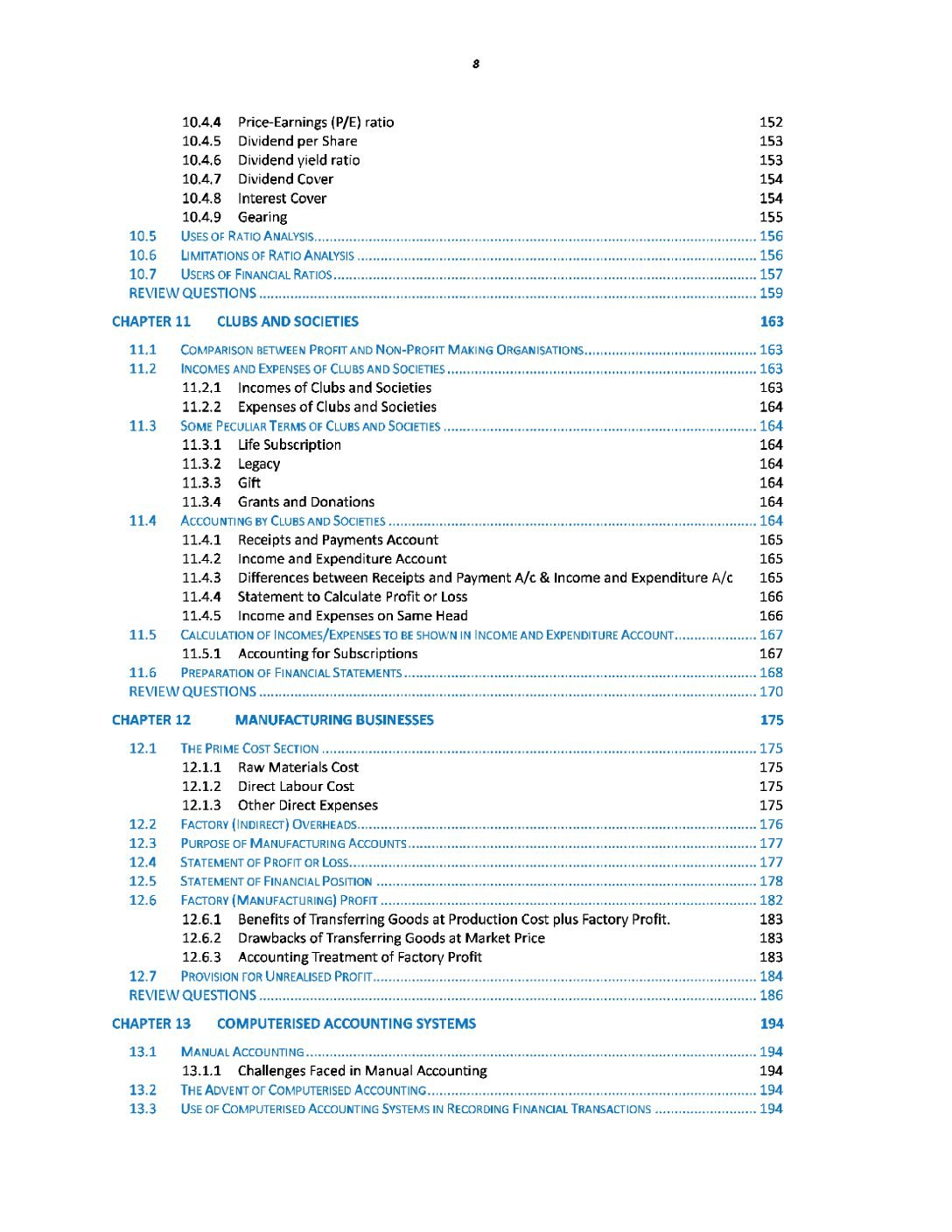
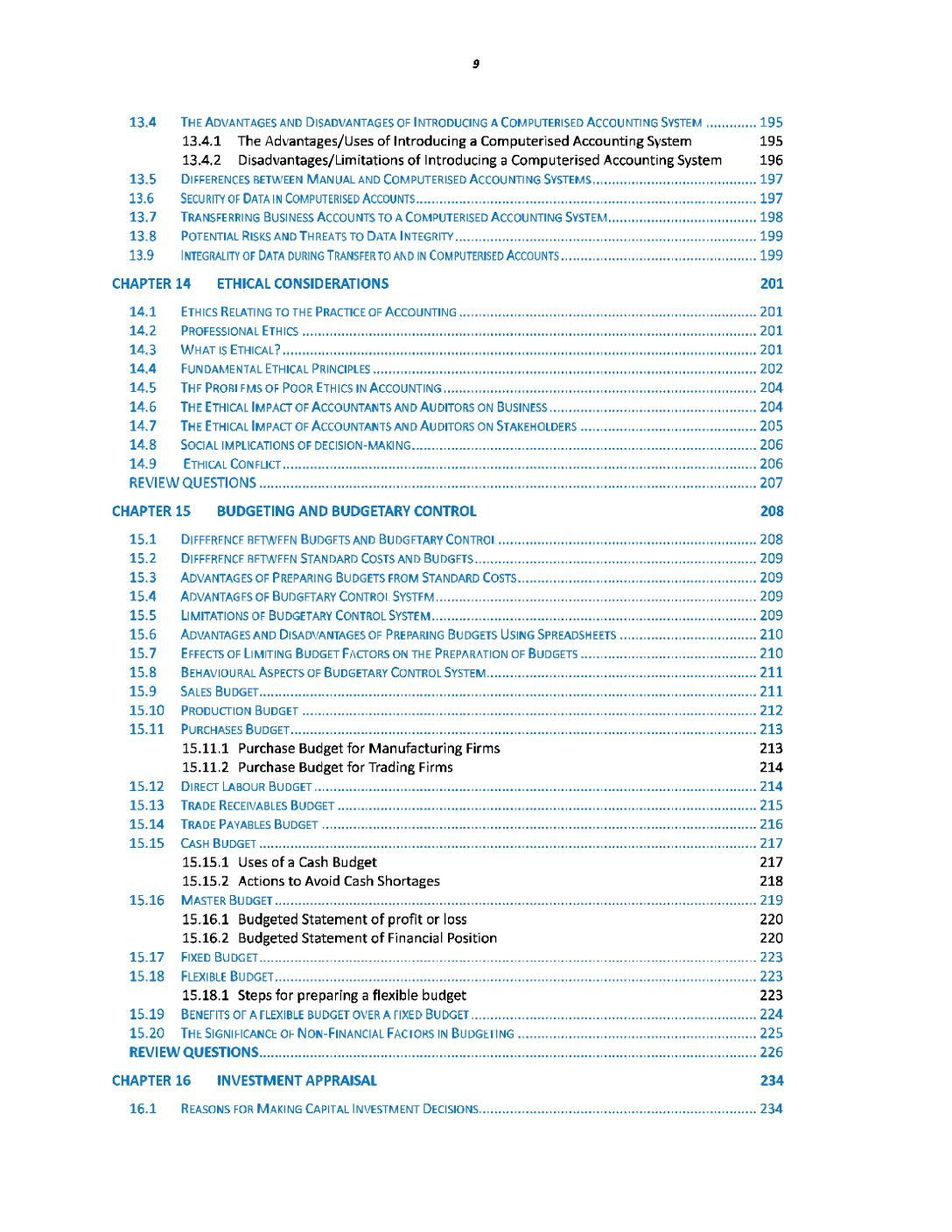
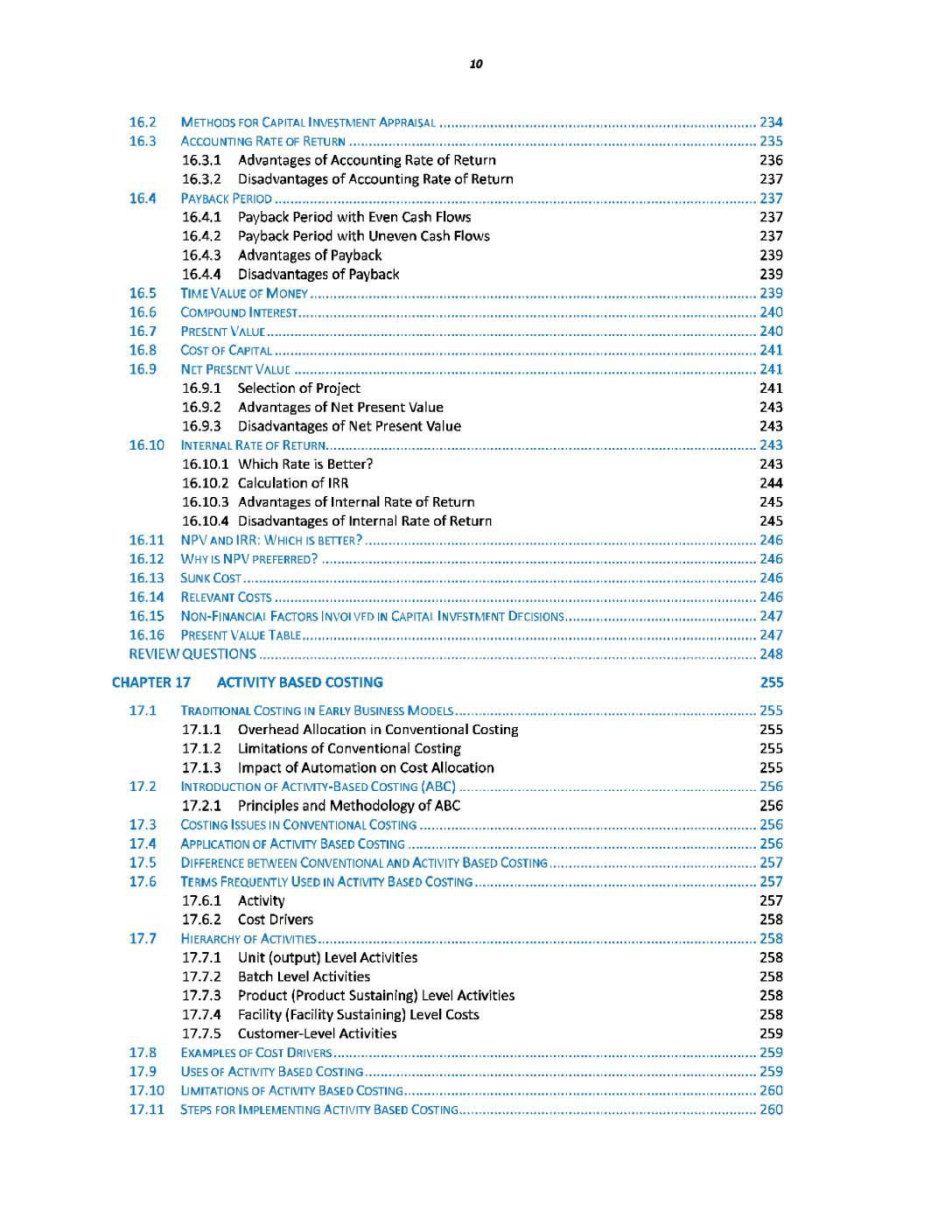
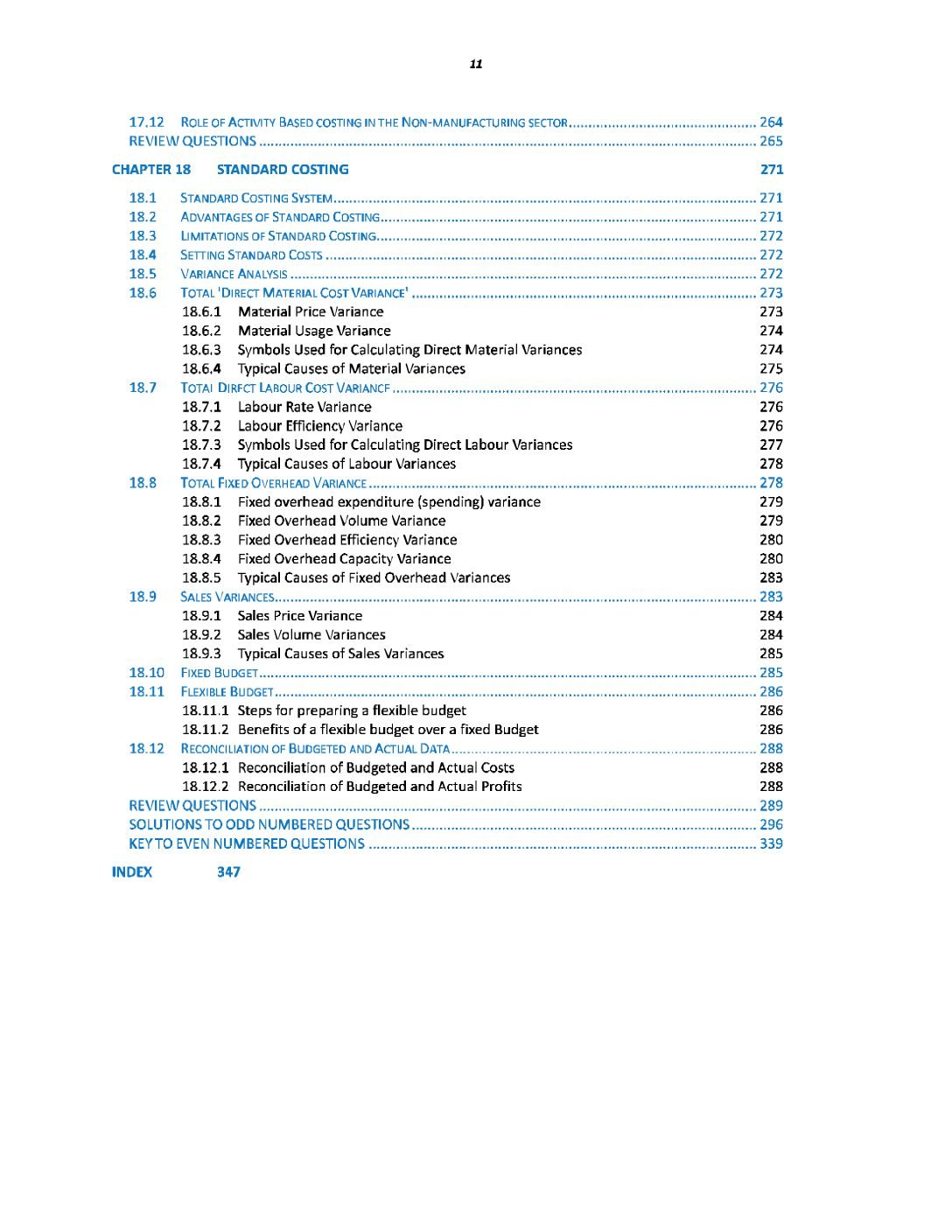

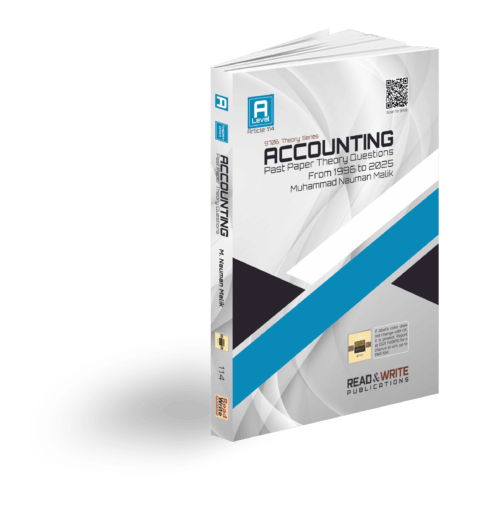
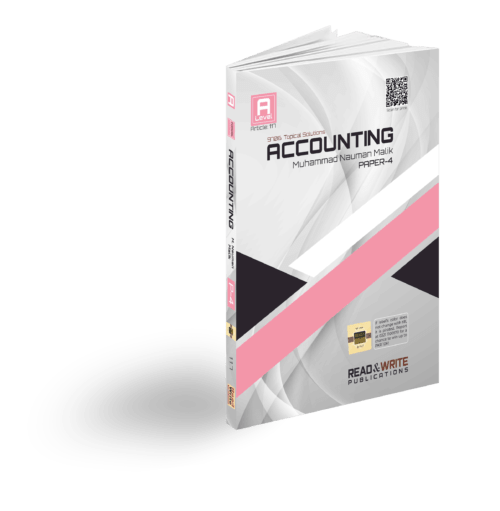
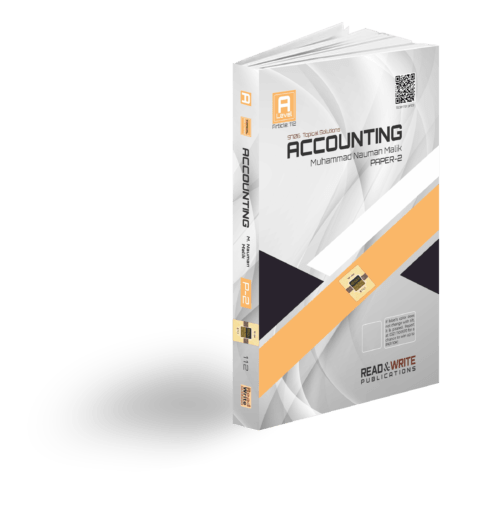
Reviews
There are no reviews yet.